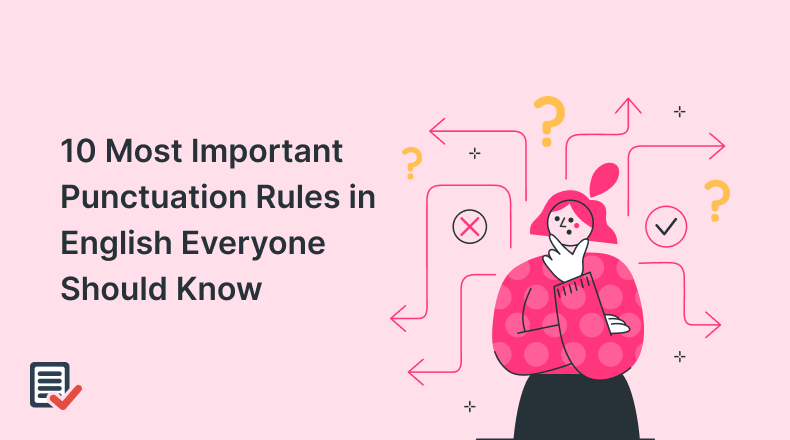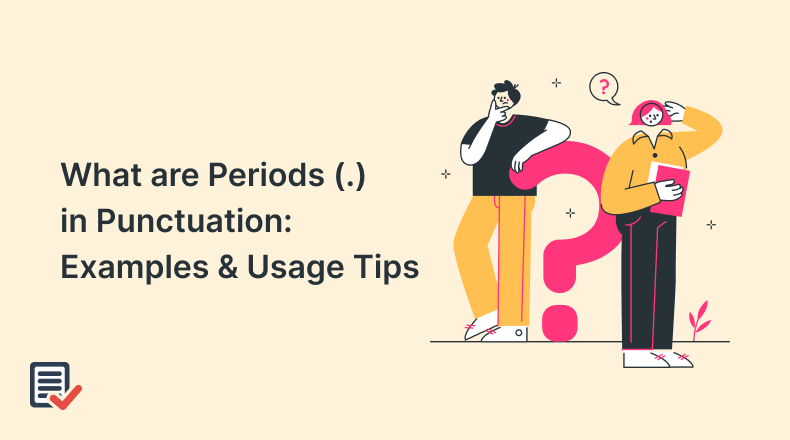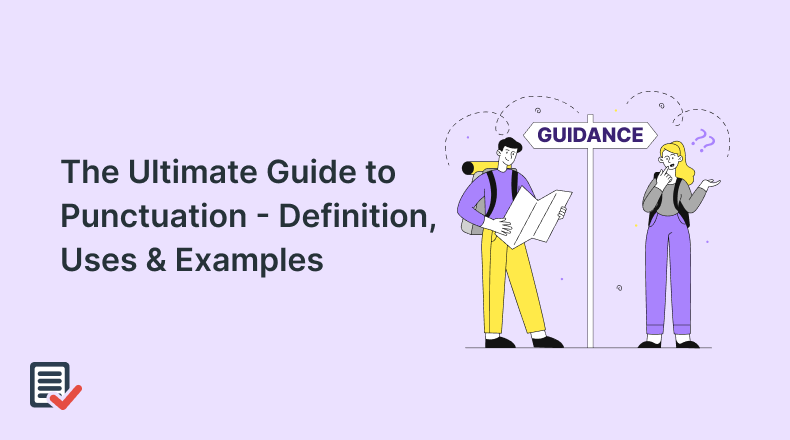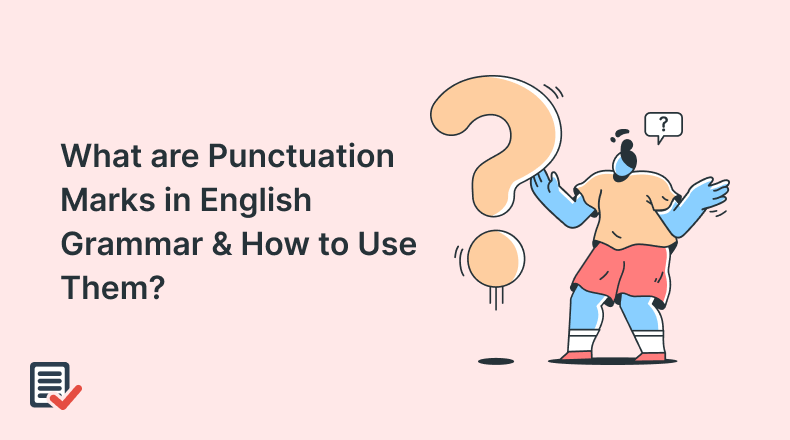
Punctuation adds emphasis and cadence to our writing. Many people, from native English speakers to those learning English as a foreign language, often struggle with when and where to use this grammar rule.
If you find this rule confusing, believe me, you’re not alone. Plenty of people have trouble when it comes to the right usage of it. Once you understand how punctuation marks work, they aren’t as complex as you might think.
Therefore, if you want to master your writing, whether it’s for an essay or even a bestselling novel, it’s important to understand how to use each component of this punctuation.
To make things easier for you, we will discuss the 10 most important punctuation marks along with examples to help you use them effectively in writing. Let’s dive into it.
Important Punctuation Rules in English
1. Use of Question Mark
A question mark is used to end a sentence. However, it ends sentences that indicate a direct question. Typically, sentences that often begin with words like what, how, when, where, why, or who. Generally, this mark denotes a shift in tone in a sentence if it’s being read out loud, so this is something to take note of.
For example:
Here’s how to use a question mark in a sentence.
- How do you like your eggs?
- Why didn’t you like the movie last night?
2. Use Exclamation Marks to Add Emphasis
An exclamation point is also known as an exclamation mark. This mark is mainly used at the end of a sentence to convey strong emotions. This can include feelings like excitement, disgust, anger, joy, or others. This rule serves to add emphasis and intensity to your writing.
For example:
- I can’t believe we won the game!
- Get out of my way!
3. Separate Your Idea with Comma
Commas help to pause a sentence. This pause can serve various purposes, such as to separate ideas and phrases or even alter the sentence structure. You can use it even if you want to separate two complete sentences. Sometimes, when we list multiple items in our sentence, this punctuation mark is implemented there.
For example:
- He visited the museum, and then he met his friend for dinner.
- She went shopping and bought a dress, three shirts, shoes and a pair of jeans.
4. Link Your Phrases with Semicolon
Often seen as a mysterious punctuation mark, the semicolon has a special role in writing. It connects closely related independent clauses without using a coordinating conjunction. This punctuation mark adds elegance and variety to your sentence structure, but it should be used carefully. This rule is a bridge that links ideas while keeping them distinct.
For example:
- I have a big exam tomorrow; I can’t go out tonight.
5. End Your Thought with Period
A period should be placed at the end of every sentence unless you use another punctuation mark, like a question mark. It’s also used in abbreviations, especially for titles like “Dr. Linton.” It also is common to use periods when writing acronyms and initials.
For example:
- The meeting starts at 10 AM.
6. Enclose Your Text in Quotation Marks
Quotation marks highlight direct speech or any quote. They can also set off a word or phrase being discussed or indicate an unusual or ironic word usage. There are two types of quotation marks: double (“”) and single (“). Double quotation marks are basically used for most quotations, while single quotation marks are typically inserted for various quotes within quoted speech.
For example:
- He said, “I don’t think ‘fair’ is the right word.”
- Then she replied, “I’m not sure ‘right’ is either.”
7. Parentheses Nonessential Details
Parentheses enclose extra information in a sentence that isn’t essential for understanding its main meaning. If your content is already complete with proper sentence length, then no additional punctuation is needed.
For example:
- She finally arrived at the party (she was an hour late) and joined the group.
8. Apostrophes
An apostrophe indicates ownership of a noun or the omission of part of a word. Instead of it, you shouldn’t add an apostrophe. If you spot an apostrophe in plural nouns that aren’t possessive, it’s likely a grammatical mistake. Apostrophes have clear purposes and shouldn’t be used without reason.
For example:
- Susan’s book
- My parents’ house
9. Don’t Use Hyphens for Adverbs Ending
When you create a compound adjective, you should use a hyphen to connect an adverb and an adjective to describe a noun clearly. But if the adverb ends in “-ly,” you must skip the hyphen. Similarly, here, the rule also changes when the compound adjective comes after the noun; in that case, you don’t need a hyphen either.
For example:
- Hyphen: Arthur is a well-respected man.
- Without a hyphen: Arthur is a highly respected man.
10. Capitalization:
Capitalization is one of the important rules of grammar that we all are learning about from our school days. However, even people can sometimes be confused about what should be capitalized and what should not. The first word of every sentence should always be capitalized. Even all proper nouns, whether the names of people or places, also have to start with capital letters.
For example:
- Alice went to London.
- The dog ran across the yard.
Wrapping Up:
Punctuation is the conductor of your writing, guiding every element to create a harmonious composition. Mastering these 10 essential punctuation rules will help you craft clear, engaging, and polished content. With practice, you’ll perfect your skills and bring your writing to life.
Search
Categories
Recent Blogs
-

Avoid Plagiarism in Academics - Useful Tips and Advice For Students
-

How to Write an Executive Summary That Stands Out?
-

What are Periods (.) in Punctuation: Examples & Usage Tips
-

Grammar Vs Syntax - Understanding the Key Differences With Examples
-

What is Editorial Content & How Is It Used in Marketing?


